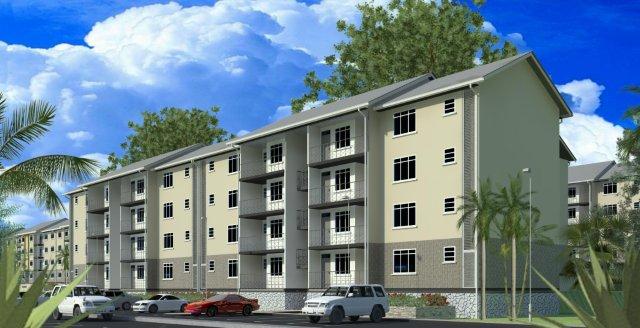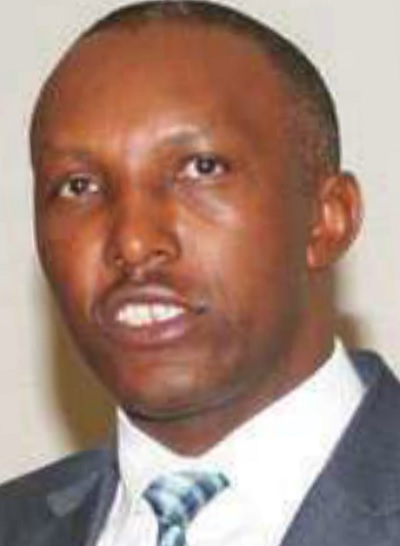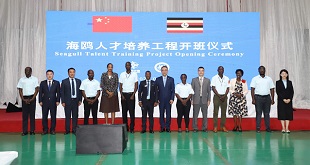
INTERVIEW: Parity Twinomujuni is the chief executive officer of the National Housing and Construction Company (NHCC). He spoke to Isaac Khisa about their operations and other pertinent issues in the real estate industry.

What is your leadership style as a chief executive officer?
My motivation is to work with others to solve the problem at hand. I tend to combine humility with empathy while working with others. I use different approaches according to situations. I love my low profile approach to life and would love to be remembered for what I contributed to the wellbeing of mankind.
NHCC has been in the real estate sector for decades. What is your assessment of its performance over time?
NHCC has built over 20,000 houses in its 52 years. Initially, NHCC built houses in not only Kampala but in many other towns across the country in line with its national brand. In the late 1960s and early 1970s, the company build and managed estates in Kololo, Kiwafu, Bugolobi, Nakasero, Bukoto among others. It was the official construction arm of the government and contracted many infrastructure projects across the country. Because of the political instability, not much was done from 1970’s to 1990’s. But as peace resumed, the company started working on a number of housing estates around Kampala.
What plans do you have as NHCC to ensure that the demand for housing is achieved at an affordable price?
The housing deficit in Kampala is estimated at 200,000, and growing. We also need to ask whether the type of housing that we boast of is the quality that we should have in a capital city.
In my view, possibly 70-80% of housing in the bigger Kampala would have to be demolished for better housing in the next 20 years. If you look at Katwe, Nsambya, Kibuli, Kisenyi, Nakulabye, Najanankumbi, Kawempe, what you see are big slums. We have an option as a country to keep in this mess or to have our city re-planned; we are simply postponing a problem. As NHCC, we shall continue to build better settlements and we hope others can learn from our organised estates. We have plans of at least constructing 1,000 units per year but this figure should grow to over 3,000 units by the 5th year of our strategy. As NHCC, we are ready to start the re-development of slums.
NHCC and other developers have been investing in developing prime residential houses. Now that that segment appears heading towards saturation, does that worry you?
We have sold every house we constructed and we have not satisfied even 10% of our target market. The middle income and upper income segments are growing, people are producing, rural urban migration is increasing and investors and tourists are pouring in at a high rate. By the end of this year we should have constructed houses at six different sites. We believe that we will sell all of them.
There’s a general view your housing units are not by any measure meant for the low end majority of Ugandans given the high prices. What is your comment on this?
We put products on the market and have these products sold and still yearning for more. That means from the business angle we are getting right. However from the broad mandate, Ugandans are right to complain that we have not provided a product that will benefit the majority who are not rich because we have impediments. That is why real estate has a high death rate for housing construction companies. Most of those that have entered the sector have either wound up, are distressed or have diversified to other sectors.
Why haven’t you ventured into low cost housing to meet the housing needs of Ugandans?
Amidst the challenges in the industry, we did low cost houses in Naalya and in the next three months we shall start on a 3,600 affordable project in Bukerere. We have also designed an affordable product for Municipalities and we hope to try these in eight municipalities soon. We are testing another product for the middle class in Mbarara where 160 houses are now under construction. We have therefore not abandoned this market. In fact it is the future of our business. Our designers are working on a product that we will sell for slum upgrade.
What are some of the challenges, if any, that the real estate faces hampering growth in the country?
The big five challenges facing the industry are cost of construction finance, availability and cost of mortgage financing, cost of infrastructure (roads, water, sewerage systems, electricity connection), sale of housing being value added tax exempt; and poor urban planning. Address these and the industry will thrive. My assumption is that when these are solved, the will to fight impunity in land encroachment would be ignited.
Where do you see NHCC in the next five years or so?
As NHCC, we promise Ugandans that the honeymoon in over. We are back to developing houses in municipalities. We have completed 133 houses in Namungoona and have started on 144 apartments in the same area. We have also started Jasmine Project in Naalya (58 units), Naalya Pride (312 units), while the construction of Luzira (350 units) in Luzira will start next year. We are planning to launch the construction of 3,600 units at Bukerere in October.
We have also completed designs for 900 units at Lubowa; construction should start anytime this year. At the same time, we are also looking at opportunities for slum upgrade and we should see our first such project in 2017 and 2018.
Our target is to have over 5,000 completed units in the next five years. This should create over 25,000 direct jobs in this period and over 125,000 jobs indirectly in the businesses that support the housing industry.
****
editor@independent.co.ug
 The Independent Uganda: You get the Truth we Pay the Price
The Independent Uganda: You get the Truth we Pay the Price



Good work.